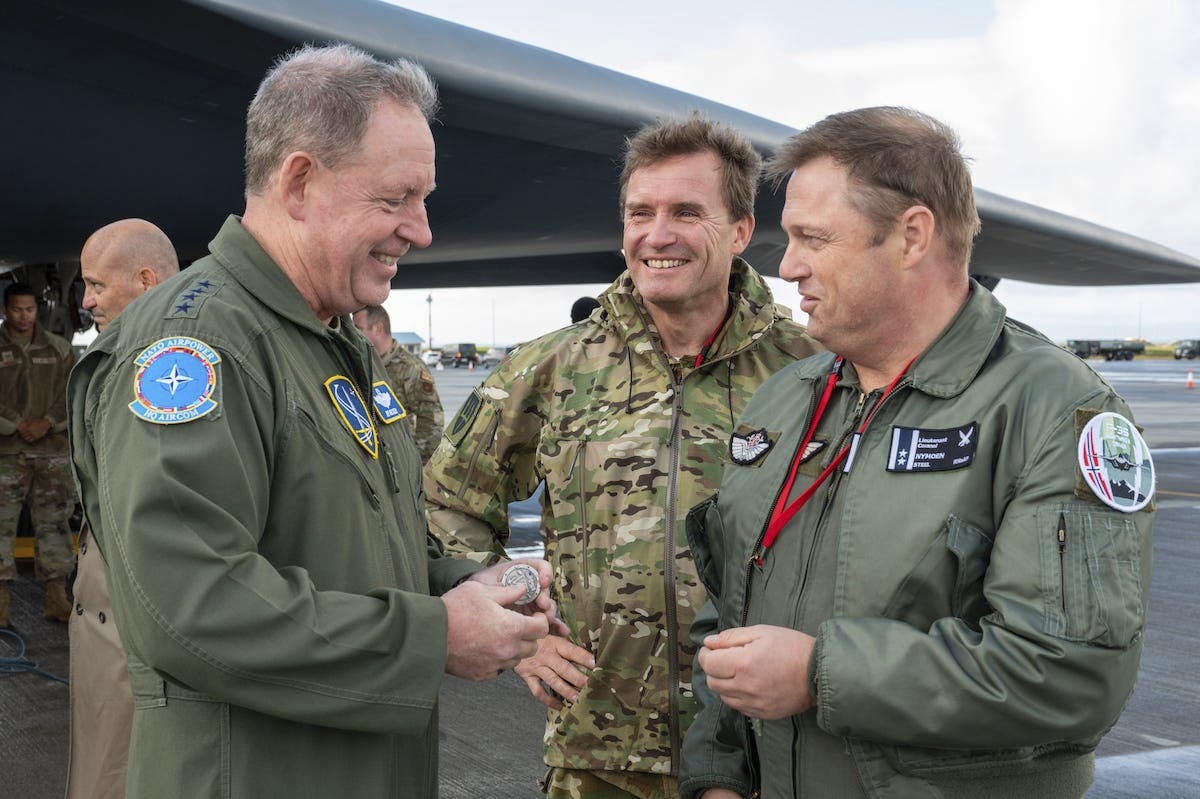Lessons Learned From the Air War in Ukraine Drive DOD Air Dominance Priorities
The Space Force aims for new space systems to achieve space domain capabilities.

U.S. Air and Space Force leaders cited the importance of air dominance to winning a conflict and set goals to deliver more resilient space systems and achieve space domain awareness and capabilities by 2026.
“I think most folks thought that this war would be over in two weeks, maybe a month. And here we are, 18 months later, and it’s still going on, and the reason that is is because neither side has been able to gain air superiority. And when you don’t, you end up seeing the fight that we’re seeing today,” Gen. James Hecker, commander of U.S. Air Forces in Europe and U.S. Air Forces in Africa, said at AFA’s Air, Space & Cyber Conference in National Harbor, Maryland, last week.
The comments came after Ukraine’s recent attack on two Russian ships along with the naval shipyard infrastructure in annexed Crimea and is the latest example of Ukraine’s growing capabilities in the air domain. The attack is considered the largest one on the headquarters of Russia’s Black Sea Fleet since the start of the Russian invasion of Ukraine 18 months ago.
“But all the equipment that we are giving [Ukraine] — most of it depends on space superiority and what we get from space, so just as important as air superiority is space superiority as we move into the future,” he added.
Space Force Maj. Gen. Douglas Schiess, commander of Combined Force Space Component Command and vice commander of Space Operations Command, said it is vital for the service to have resilient architectures in place for continuous satellite communications and navigation abilities in denied environments.
“We have learned lots of lessons from Ukraine. I’d say the first one is proliferated low-Earth orbit communication satellites and the ability to provide communications when we thought maybe we wouldn’t be able to from jamming and other things,” Maj. Gen. Schiess said.
“Obviously, in the fight there, we have seen electronic interference for both satellite communications and GPS,” he added. “And we have to realize that we’re going to have to fight through that.”
Maj. Gen. Schiess also emphasized the need for the U.S. to deliver missile sensing and warning capabilities that will allow it to detect ballistic and hypersonic missiles and effectively respond to potential threats. Last year, the Space Force established a program office to coordinate the efforts to procure satellites that detect hypersonic missiles, a needed effort due to the agencies struggling to work together to build an architecture for resilient missile sensing capabilities.
Being cybersecure, having space domain awareness and bringing partnerships together are also vital in achieving air and space superiority.
“We have to have intel-focused, cybersecure, combat credible forces that are partners with our coalition and our mission partners … we have to have the right intelligence to be able to know what is going on in our domain. We have to know what our adversaries are doing when they’re doing it. We have to have intelligence officers that are getting after that to say, hey, this might be the intent of what they’re doing that has to then feed into our operations,” said Maj. Gen. Schiess.
The U.S. has largely relied on ground-based systems for surveillance, but space-based systems are growing in priorities as they remain essential to addressing the leadership’s growing concerns about on-orbit threats.
This is a carousel with manually rotating slides. Use Next and Previous buttons to navigate or jump to a slide with the slide dots
-

DOD Turns to Skills-Based Hiring to Build Next-Gen Cyber Workforce
Mark Gorak discusses DOD’s efforts to build a diverse cyber workforce, including skills-based hiring and partnerships with over 480 schools.
20m listen -

AI Foundations Driving Government Efficiency
Federal agencies are modernizing systems, managing risk and building trust to scale responsible AI and drive government efficiency.
40m watch -

Trump Executive Order Boosts HBCUs Role in Building Federal Tech Workforce
The executive order empowers HBCUs to develop tech talent pipelines and expand access to federal workforce opportunities.
3m read -

Navy Memo Maps Tech Priorities for the Future Fight
Acting CTO’s memo outlines critical investment areas, from AI and quantum to cyber and space, as part of an accelerated modernization push.
5m read -

DOD Can No Longer Assume Superiority in Digital Warfare, Officials Warn
The DOD must make concerted efforts to address cyber vulnerabilities to maintain the tactical edge, military leaders said at HammerCon 2025.
4m read -

New NSF Program Cultivates the Future of NextG Networks
The agency’s new VINES program looks to tackle key challenges like energy efficiency and future-proofing wireless tech.
21m watch -

Marine Corps Operation StormBreaker Slashes Software Delivery Timelines by 17x
New program aims to deliver critical digital capabilities to warfighters at the "speed of relevance" by overhauling traditional processes.
4m read -

Tracking CIOs in Trump's Second Term
Stay informed on the latest shifts in federal technology leadership as new CIOs are appointed and President Trump's second term takes shape.
6m read -

DHA CDAO Spearheads Master Data Catalog to Boost Transparency
Jesus Caban plans to boost DHA's data maturity through a new master data catalog, governance frameworks and inventory of tech tools.
5m read -

IHS Prepares to Deploy PATH EHR at Pilot Sites in 2026
IHS targets PATH EHR pilot in 2026, emphasizing governance, collaboration and interoperability as key pillars of the modernization strategy.
4m read -

Trump Orders Spark Government-Wide Acquisition Overhaul
As Trump pushes for a faster, simpler procurement system, agencies are leveraging AI and adapting strategies to meet new requirements.
5m read -

IRS Makes Direct File Code Public as Lawmakers Debate Program’s Fate
The agency sees the Direct File source code as beneficial to government digital services despite what happens with it in proposed budgets.
5m read
















